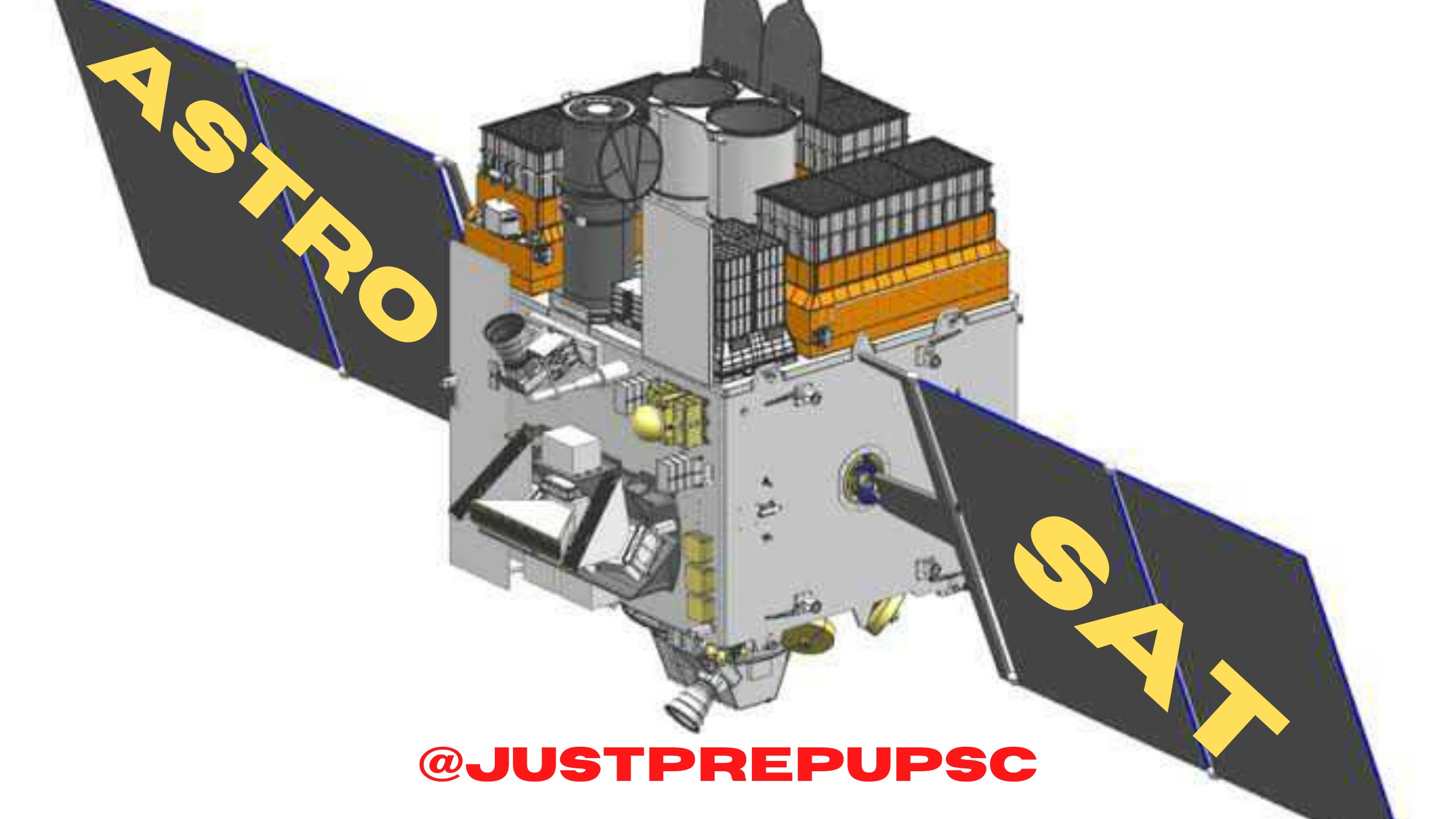
INTRODUCTION
- The Indian Space Research Organization is working on a next-generation astronomy satellite. On September 28, 2015, ISRO launched its first astronomy mission, AstroSat. The mission has a five-year lifespan. It is still in working order. The satellite is anticipated to operate for few more years.
ABOUT ASTROSAT –
- AstroSat, India’s first astronomy satellite, was successfully launched from Sriharikota’s Satish Dhawan Space Centre. ISRO’s Polar Satellite Launch Vehicle-C30 launched it on six foreign satellites (PSLV-C30). In September 2020, it will have served for five years.
- It has mapped star clusters and investigated satellite galaxies of the Milky Way called Magellanic Clouds with a resolution three times that of NASA’s Galex mission. India has entered the club of countries with space observatories, which includes the United States, Russia, Japan, and the European Space Agency, with the launch of AstroSat.
- Also, AstroSat is a space observatory with several wavelengths. It was created to study celestial bodies such as distant stars using the electromagnetic spectrum’s optical, ultraviolet, low, and high-energy X-ray components. AstroSat data is widely utilised for research in a variety of disciplines of astronomy, from galactic to extra-galactic.
- It discovered extreme-UV radiation from AUDFs01, one of the furthest star galaxies. Earth is 9.3 billion light-years away from the galaxy. Dr Kanak Saha of the Inter-University Centre for Astronomy and Astrophysics headed a multinational team of astronomers from India, the United States, the Netherlands, France, Switzerland, and Japan.
- AstroSat has also discovered fast fluctuation of high energy (especially >20keV) X-ray emission from a black hole system for the first time.
MISSION AND ORBITS OF THE SATELLITE –
- AstroSat is equipped with six scientific payloads, including sky monitors, X-ray and ultraviolet telescopes, and a unique imager, among others. ISRO, the Inter-University Centre for Astronomy and Astrophysics (IUCAA), and the Tata Institute of Fundamental Research collaborated to build the six main instruments (TIFR).
- Charged Particle Monitor (CPM), Cadmium Zinc Telluride Imager (CZTI), Scanning Sky Monitor (SSM), LAXPC Instrument, UltraViolet Imaging Telescope (UVIT), and Soft X-ray Imaging Telescope (SXRT) are the six instruments (SXT).
- It was launched into Low-Earth Equatorial Orbit at a height of 650 kilometres and was built with a five-year mission life in mind.



